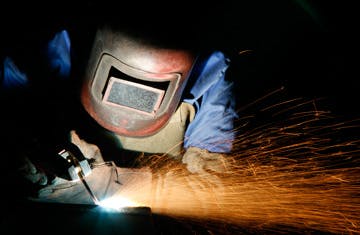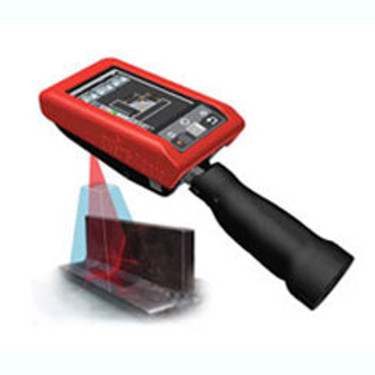Why Pipeline Welding Inspection is Important for Long-Term Pipeline Security
Comprehensive Guide to Pipe Welding Evaluation: Making Sure Integrity and Security in Pipeline Building and Maintenance
The integrity and safety and security of pipelines are paramount in today's framework landscape, underscoring the essential function of welding inspection in pipeline building and construction and maintenance. A comprehensive guide on this subject not just highlights the requirement of assessing weld high quality yet likewise resolves the various examination methods readily available, such as radiographic and ultrasonic screening. By understanding usual defects and their ramifications, stakeholders can apply finest techniques that ensure compliance and long life. Nonetheless, the complexities associated with welding examination raise essential inquiries about market requirements and the advancing technologies that may redefine these methods.

Significance of Welding Evaluation
Welding evaluation plays a crucial duty in making sure the stability and security of pipe systems. It acts as a fundamental procedure that verifies the high quality and dependability of welded joints, which are typically one of the most weak spots in pipeline construction. Via organized examination, examiners can identify possible flaws such as fractures, porosity, and incomplete blend, which might compromise the architectural stability of the pipeline.
The importance of welding examination prolongs beyond plain conformity with industry criteria; it likewise safeguards public health and the setting. Pipes carrying unsafe products present significant threats if failures occur. Reliable evaluation methods assist prevent ruptures and leakages, mitigating ecological damage and securing communities. Moreover, comprehensive examinations can improve the long life of pipeline systems, minimizing the need for expensive repair work and downtime.
In enhancement to guaranteeing security and conformity, welding examination fosters a culture of quality control within companies. By prioritizing evaluation throughout the welding procedure, business can construct a credibility for dependability and excellence, eventually bring about raised customer confidence and business opportunities (Pipeline Welding Inspection). Therefore, the value of welding assessment can not be overemphasized in the context of pipe building and construction and upkeep
Trick Welding Procedures
Numerous welding procedures are employed in pipeline construction, each with its own advantages and applications. Amongst one of the most commonly made use of methods are Protected Steel Arc Welding (SMAW), Gas Tungsten Arc Welding (GTAW), and Gas Steel Arc Welding (GMAW) SMAW is preferred for its versatility and ability to carry out well in different ecological problems, making it appropriate for field applications.
GTAW, commonly described as Tungsten Inert Gas (TIG) welding, is acknowledged for its ability to create high-grade welds with excellent control over heat input, making it perfect for thin-walled pipes and stainless-steel materials. GMAW, or Steel Inert Gas (MIG) welding, offers high deposition prices and is effective for large-scale tasks, usually used in the construction of pipelines in regulated atmospheres.
Furthermore, Submerged Arc Welding (SAW) is made use of for its deep infiltration and high performance, especially in the construction of large-diameter pipelines. Each of these processes contributes to the total stability and safety of pipe buildings, enabling welders to pick the most ideal technique based on product type, job requirements, and ecological conditions. Recognizing these crucial welding processes is necessary for effective pipe welding assessment.
Common Flaws and Their Effect

Porosity, defined by small gas pockets trapped within the weld, damages the product and can result in leaks. Splits, which might happen because of thermal anxieties or incorrect cooling, can result and propagate in structural failing under pressure. Undercutting, where the base steel is eroded along the weld grain, minimizes the effective cross-section of the pipe, boosting the risk of crack.
Incomplete combination happens when the weld metal does not properly bond with the base steel, leading to weak areas that might fail under stress and anxiety. Slag addition, the entrapment of non-metallic material within the weld, can likewise compromise the joint's honesty. Determining and addressing these flaws early in the construction procedure is important to ensuring the long-lasting reliability and security of pipe systems, thus guarding both the environment and the facilities.
Inspection Strategies and Tools

Aesthetic assessment check here is the first line of protection, enabling assessors to determine surface area abnormalities, misalignment, or other noticeable issues. Ultrasonic screening utilizes high-frequency acoustic waves to find interior flaws, offering exact depth dimensions and identifying problems without harming the weld. Radiographic testing utilizes X-rays or gamma rays to create photos of the weld, allowing the recognition of internal spaces, splits, or inclusions.
Magnetic bit screening is especially effective for finding surface and near-surface interruptions in ferromagnetic materials. This technique includes using an electromagnetic field and fine iron bits to the weld, disclosing defects with the buildup of fragments at defect sites.
In enhancement to these strategies, specialized tools such as automated ultrasonic testing devices and electronic radiography systems boost evaluation precision and performance, ensuring an extensive analysis of pipe welds throughout construction and maintenance.
Best Practices for Compliance
Abiding by finest methods for conformity in pipe welding assessment is critical for making certain the integrity and safety of the infrastructure. Organizations must establish an extensive quality management system that aligns with industry standards such as ASME, API, and AWS. This includes developing detailed welding treatments that define the qualifications, methods, and products needed for welders.
Regular training and accreditation of assessment workers are important to preserve high competency levels. Assessors should be acquainted with numerous non-destructive testing (NDT) methods, consisting of ultrasonic testing, radiographic screening, and aesthetic evaluation, to efficiently determine potential issues.
Paperwork plays an important duty in conformity; maintaining exact records of inspections, weld treatments, and personnel credentials assists to ensure traceability and liability. Arranged audits and testimonials of welding methods need to be carried out to identify areas for improvement and make sure adherence to established procedures.

Verdict
In verdict, the application of extensive welding evaluation protocols is extremely important for making certain the honesty and security of pipeline building and construction and upkeep. By determining problems and employing innovative examination methods, organizations can dramatically improve the high quality of bonded joints. Adhering to ideal methods fosters conformity with sector requirements, ultimately protecting public wellness and stopping environmental threats. Constant renovation in assessment processes will certainly contribute to the long life and reliability his response of pipe systems, underscoring the essential function of welding inspection in the market.
The stability and safety and security of pipes are critical in today's facilities landscape, emphasizing the critical function of welding assessment in pipe building and construction and maintenance. Understanding these essential welding procedures is crucial for reliable pipeline welding inspection.
Adhering to finest methods for conformity in pipe welding examination is crucial for ensuring the integrity and security of the facilities.In final thought, the application of extensive welding assessment methods is extremely important for making certain the integrity and safety and security of pipe building and construction and upkeep. Continual renovation in examination procedures will certainly add to the durability and dependability of pipe systems, highlighting the important duty of welding examination in the sector.